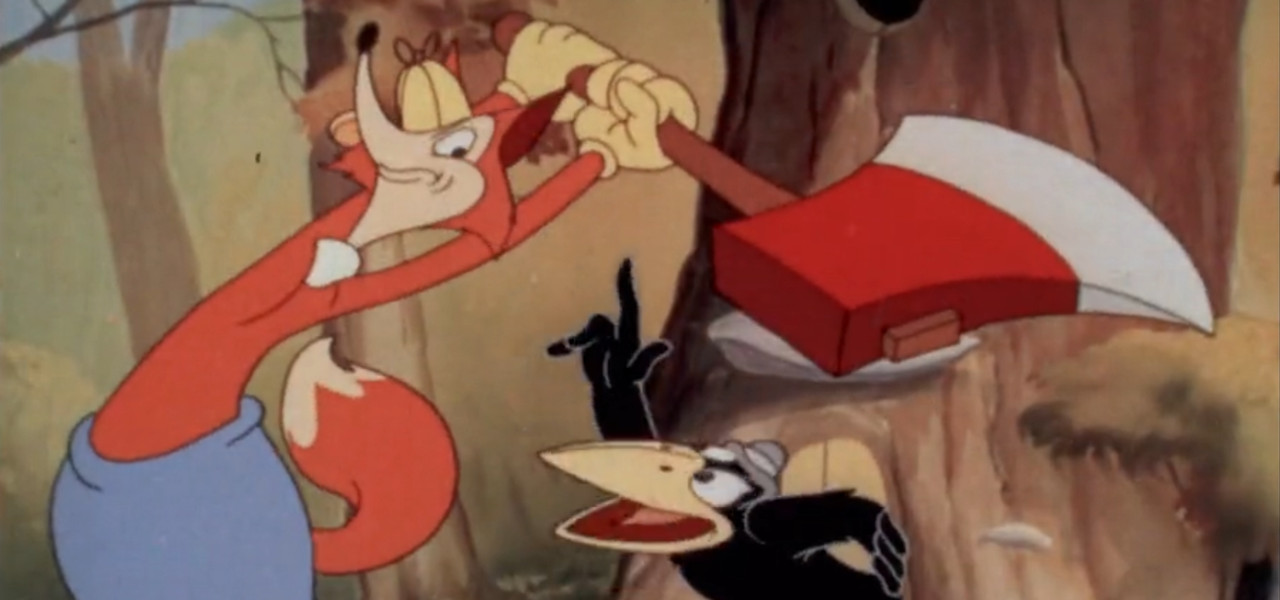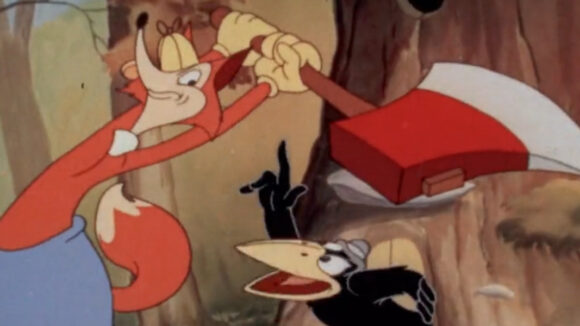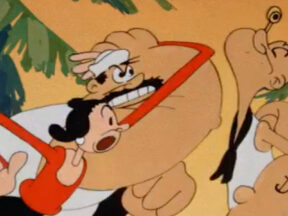

Obscure Cartoon Character Spotlight: The Fox And The Crow
For today’s spotlight on obscure cartoon characters of yesteryear, we’re taking a look at the Fox and the Crow, two cartoon stars of the 1940s that deserve more attention.
The Fox and the Crow – known as Fauntleroy Fox and Crawford Crow in their comic book appearances – starred in twenty-one cartoons released by Screen Gems through its parent company Columbia and then appeared in three more cartoons by UPA.
The Fox and the Crow were the brainchild of Looney Tunes veteran and future live-action filmmaker Frank Tashlin, who served as production supervisor during an exciting but brief spurt of creativity at Screen Gems. Tashlin’s first Fox & Crow short The Fox and the Grapes (1941) might be one of the most quietly influential cartoons in animation history. The film pioneered the classic cartoon structure of try/fail blackout gags, which inspired numerous chase cartoons of the 1940s-’50s (Chuck Jones acknowledged the film as an influence on the Road Runner). The Fox and the Grapes neatly establishes the antagonistic dynamic between the fussy Fox and the wised-up con artist Crow (both voiced by Mel Blanc in their maiden voyage).
— Cartoon Study (@CartoonStudy) November 2, 2023
It didn’t take long for Tashlin to clash with the management at Columbia, and his tenure as production supervisor didn’t even last a year. The first Fox & Crow short was the only one he directed, although he supervised the next two. The underrated Bob Wickersham took over for Tashlin as the primary director of the series, while Frank Graham (best remembered as the voice of the lusty wolf from the Tex Avery cartoons) replaced Blanc as the voice of both characters.
This clip from the second Fox & Crow cartoon, Woodman, Spare That Tree (1942), shows everybody at the top of their game: the compositions are inventive, the characterizations are strong, and Emery Hawkins’ fluid animation of the Fox merrily skipping through the forest is nothing short of extraordinary.
— Cartoon Study (@CartoonStudy) November 2, 2023
The Fox & Crow cartoons greatly vary in quality, but the good ones are very good. The first three produced under Tashlin’s watch are comic gems, while later entries like Room and Bored (1943) and Mr. Moocher (1944) are excellent character comedies that nicely play on the Odd Couple-style personality clash between the persnickety Fox and the boorish Crow. We’re also treated to top-notch slapstick in entires like Phoney Baloney (1945), where our two heroes try to turn each other in for a reward.
— Cartoon Study (@CartoonStudy) November 2, 2023
The Screen Gems studio closed its doors in 1946, but the Fox & Crow didn’t stop there; the characters appeared in a successful series of comic books – published by DC Comics, no less – well into the 1960s. (When are the Fox & Crow going to be incorporated into the DC Extended Universe?) Columbia also commissioned three Fox & Crow cartoons from the legendary UPA studio. The characters’ personalities stray pretty far from the earlier Fox & Crow shorts, but all three films are beautifully designed and animated. Here’s a scene from the Oscar-nominated The Magic Fluke (1949), directed by John Hubley.
— Cartoon Study (@CartoonStudy) November 2, 2023
The frustrating part of the Fox & Crow’s current obscurity is that there’s no good reason for it. These films have rarely been shown on tv, and they’ve never been available on video or dvd, and yet they’re well-animated, high-quality cartoons that don’t deserve to be forgotten. They’re not as witty as the Warner Bros. or MGM cartoons of the same time, but they’re darn good by any other standard. If these cartoons had been on regular Cartoon Network rotation when I was a kid, I know I would have enjoyed them, and I’ll bet a lot of other people would have too. The characters are fun, and the films are full of agreeably zany humor.
So long live the Fox and the Crow, and let’s hope these obscure characters become a little less obscure in the future. Let’s finish things off with the literally fourth wall-breaking ending to Way Down Yonder in the Corn (1943).
— Cartoon Study (@CartoonStudy) November 2, 2023
Thanks to PacMania67, Naah1929, and Steve Stanchfield at Thunderbean Animation for the videos these clips were sourced from.
Woodman, Spare that Tree 35mm print courtesy of PacMania67 and Naah1929.

.png)


